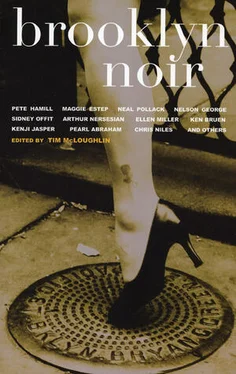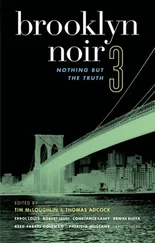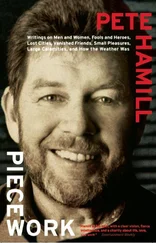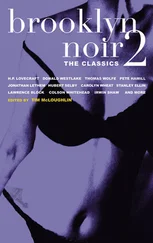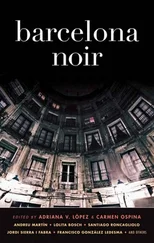If sedentary living made clams and other shellfish susceptible to accumulations of high concentrations of human-made poisons — bacterial coliforms from sewage, polychlorinated biphenyls from industry — the Bay’s fish traveled for food, in mobile homes of skin and scale, to mixed and open Atlantic waters, so fish weren’t as vulnerable to dire accumulations of pollutants. In warm weather, crag-faced, gravel-voiced old-timers would cast long for eel and fluke or snag butterfish or samplings of Jamaica Bay’s increasing population of Canarsie White Fish — floating used condoms — right off the Pier’s decaying edges. Word on the Pier, from above, state and federal environmental officials, and from below, locals, people like us, was: “You can fish, but you can’t clam.”
Canarsie Beach Park was part of Gateway National Recreation Area — not a National Park , as if a park was too much to wish for; we needed to maintain realistically low greenery expectations — but a Recreation Area Still, the place was Federal enough to have behatted, uniformed rangers. And rules. The Department of Health had officially and consistently declared Jamaica Bay unswimmable for fifty years: No primary-contact recreation — activities in which bodies made direct contact with raw water, especially total bodily submersion — allowed. Secondary contact recreation, like fishing or boating, where skin contact with water was minimal and ingestion improbable, was permitted. Clamming, I guessed, was ultra-forbidden because it required getting the whole body into the water to dig.
Practicing here, jumping off Canarsie Pier into Jamaica Bay, to simulate the worst potential payout of our gamble with gravity — falling together off a bridge into deep water, which he risked every day, just not while toting me along — required forbidden primary contact recreation. Immersion in Jamaica Bay “violated Federal rules,” Dad warned, voice somber, conspiratorially soft, “As in, the Feds You get it?”
“I got it.”
“Good.”
Bench-pressing hadn’t been practicing; it was pre-training, basic conditioning, a barely callisthenic, chicken-feed beginner’s warm-up leading us to this. To Canarsie Pier. For the for-real practicing — if those particular words, strung together and placed next to each other, made sense. Which they didn’t.
Dad started when he was fourteen. Until his death at forty-five, every workday of his life, he was scared. Two kinds of work were obtainable in the world: the safe and the dangerous. Experience and practice never made Dad unafraid. Silently, without fanfare, he tolerated extreme fear-states and accepted the probability of grave injury or death as standard workaday inevitabilities, like lunch with the gang or alone up on a scaffold, like fatigue, like fumes. His morning routine: get into whites, shave, shower, shit, like a military man, brush teeth, drink pot of coffee, slap on boots and cap, drive to site, start working, get crushingly, heart-stoppingly, fittingly panicked about dying in the coming hours. Dad did frightening things that other people didn’t want to do; other people didn’t have to do them, because people like Dad did. Blood poisoning did him in after twenty-four years of exposure to industrial chemicals, mostly paints containing an odorless, oily, poisonous benzene derivative, absorbed through skin: aniline blue. Aniline blue sounded like a song title or poem, the name of a daughter or lover. Lyrical, sing-song aniline blue killed him, but before that happened, I’d planned on his dying in a bridge fall.
There were laws against it.
Child protection laws with tucked-in bylaws that defined bringing children to dangerous workplaces as criminal offenses. Take Our Daughters to Work Day wasn’t designed for the daughters of pile driver, jack hammer, or forklift operators. Taking kids to perilous worksites violated child endangerment laws, laws ratified and upheld — lackadaisically, since the continuance of selected human genera wasn’t a big deal, even when specimens were found in bulk — for protection I didn’t want.
The laws against it didn’t stop us. Did laws ever stop anyone who wanted to do something really bad from doing something really bad? A failure of nerve stopped us. His All his. He, the adroit, well-built, well-practiced man, who did it daily, for real, chickened out. I, who hadn’t yet mastered long division or my dread surrounding it, was ready to jump right in.
Upon starting work at a new job, Dad would half-promise and half-threaten to cart me along to the worksite, fix me in place around his tough neck, my legs parted, one leg dangling off each of his shoulders, and lug me around the job all day, up and down the tiers of the bridge, everywhere work required him to be while he painted. A regular workday, but with a Beth on his back. He’d try not to let me fall. He’d do the best he could. His six feet and three inches — a tall Jew! — guaranteed me an even better view than his of water, sky, skyline, land, of the whole place that Mark LaPlace, a mixed-blood Mohawk, who, along with many Indian ironworkers, drove in every week from the Caughnawaga reservation near Montreal, called the City of Man-Made Mountains.
Earthbound, at home or school, the world was scary and too big as it was. High on a partially completed bridge, higher yet on Dad’s shoulders, the world would swell to unmanageable dimensions, awesome frights, sickening beauties. The anticipation of visual sublimity wasn’t what thrilled me at every promise-threat. I thrilled to Dad’s singular power to scare me, to his correspondingly exclusive power to soothe me. Dad could reassure me; I’d believe his reassurances, trust in them, because he knew, the cells that made him him understood how bad fear could get. Climbing together, he’d have his rope, hook, muscle-meat, and deeply treaded, break-a-leg boots, acting on behalf of his physical integrity and safety. All I’d have was a perfunctory pat on the head, knock ’em dead, kiddo , and his body. I’d be terrified and love it, love him for terrifying me, for his unique capacity to assuage terror he’d authored himself. If some evening, he’d casually, passingly mention taking me up — maybe tomorrow… you never know, do you? — the next morning, suited up in my dungaree overalls, prepared for action, I’d park my tush on his lunch pail, so he couldn’t leave without first reckoning with me, as a housecat might tuck her body within the lining of a suitcase her owner was packing for a journey, not-so-subtly notifying her master, You’re not going anywhere unless you take me, too. As if the cat, no matter how well-loved, had any say at all in the matter.
Every day he left without taking me, until I was twelve and God damn it to Hell he died and stopped no taking me.
Before he pulled that stunt, he kept on pledging and daring me to go. I’d dare him back with a fiercely incautious, You’d better believe it! As if I, no matter how well-loved, had any say at all in the matter.
Every one of New York City’s children grew up in the shadows of bridges. A smaller subset grew up or died in the penumbrae of bridge deaths. Child endangerment was a Class A misdemeanor, as naughty as a misdemeanor could be before it graduated up a grade to felony. So it was one crime, child endangerment, if I hung around bridge bases when school was out so Dad could half-look after me — babysitters and summer camp didn’t exist in our economic cosmology, the unfeasibility of camp accounting for my never learning how to swim — and it was another crime, child neglect — which was often a felony, not to mention a big fat bore — if he left me alone at home.
An outlaw either way.
Читать дальше
